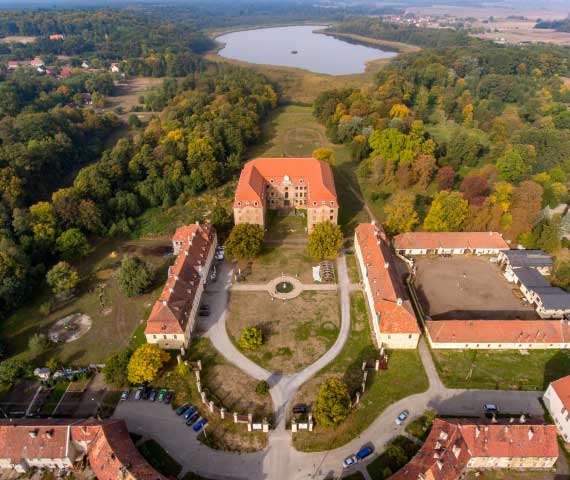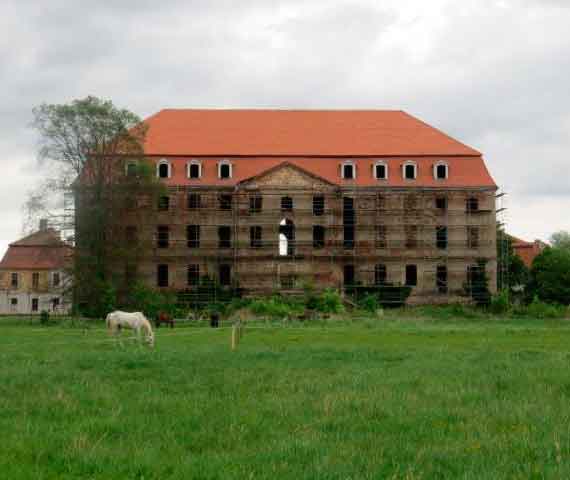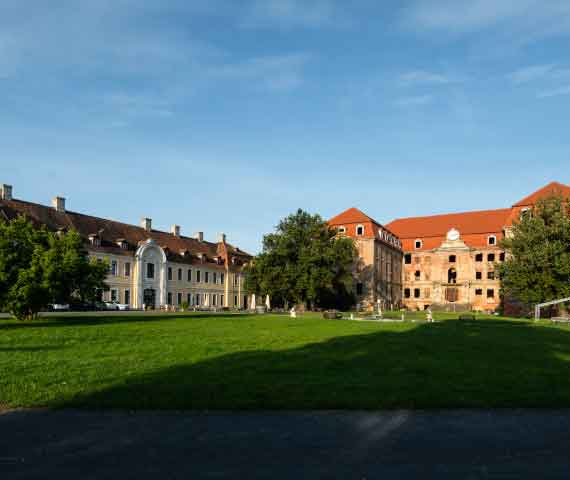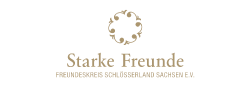In 1740, Count Heinrich von Brühl bought the Lower Lusatian manor of Pförten from the heirs of Count Christoph Heinrich von Watzdorf. In the following years he acquired other manors in the area: Zauchel (Suchodół), Datten (Datyń), Jehser (Jeziory Dolne) and Kohlo (Koło) - and finally the town and office of Forst in 1746. The Forst-Pförten property created by Brühl was the second largest governance in Lower Lusatia.
Between 1741 and 1747, Count Heinrich von Brühl had the baroque three-winged complex of the Counts of Watzdorf rebuilt and extended according to plans by Johann Christoph Knöffel. Two long cavalier houses were built in front of the palace with its mighty mansard roof, creating an imposing palace square. This was surrounded by an extensive baroque garden.
Pförten Palace was the "residence" of Count Brühl, who had created an important centre of power here. When he was not in Dresden or Warsaw, he stayed in Pförten with his family.
The palace was burnt down in 1758 on the orders of Frederick II of Prussia. After the death of the prime minister, Count Alois Friedrich von Brühl, as eldest son, took over Pförten Palace. The property was always to be passed on to the eldest son or the nearest male relative. Pförten remained in the possession of the Counts of Brühl until 1945. The family lived in the two cavalier houses to the left and right of the castle, which burnt down in 1758. The mansard roof on the main building was replaced between 1919 to 1924, but was again looted and set on fire in 1945. Since 1945 the village, renamed Brody, has been part of Poland.
Today: The castle is now in ruins. The side buildings are now a palace hotel. The park is freely accessible. It is maintained by volunteers from Poland and Germany, including members of the Landesverein Sächsischer Heimatschutz (“Saxon Heritage Society”).











